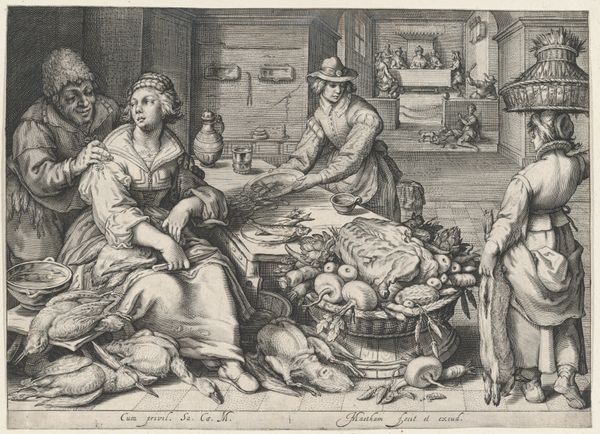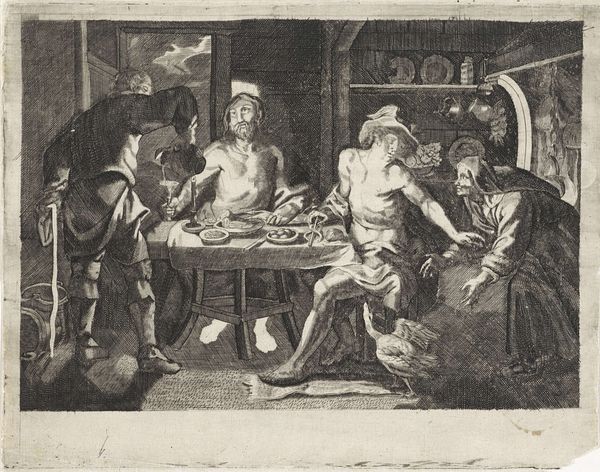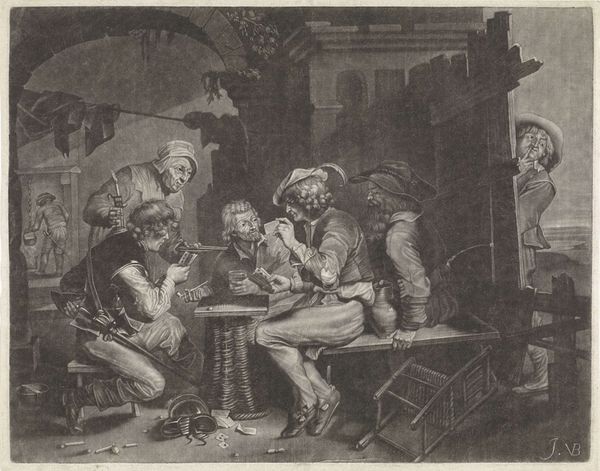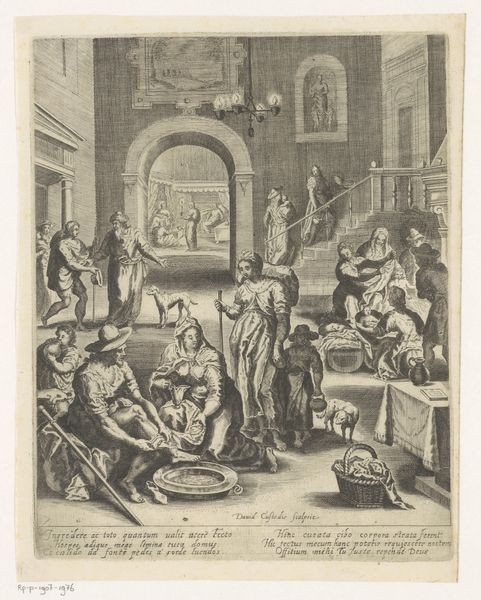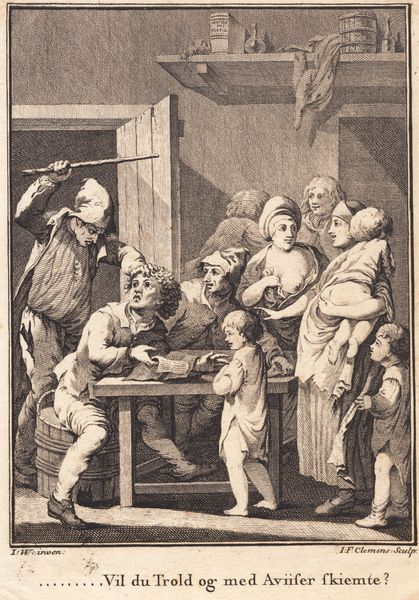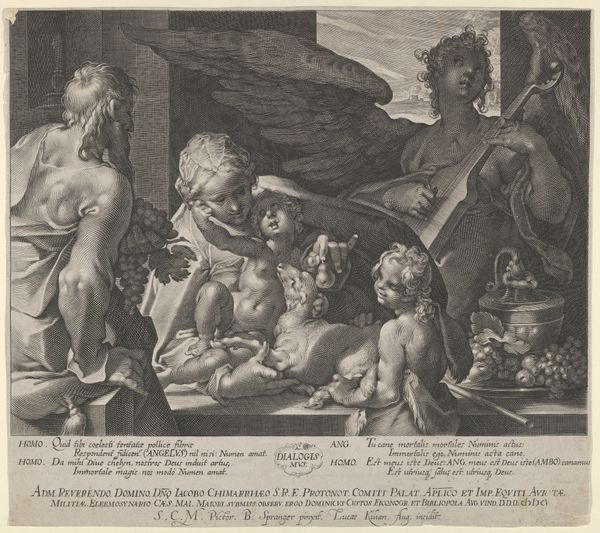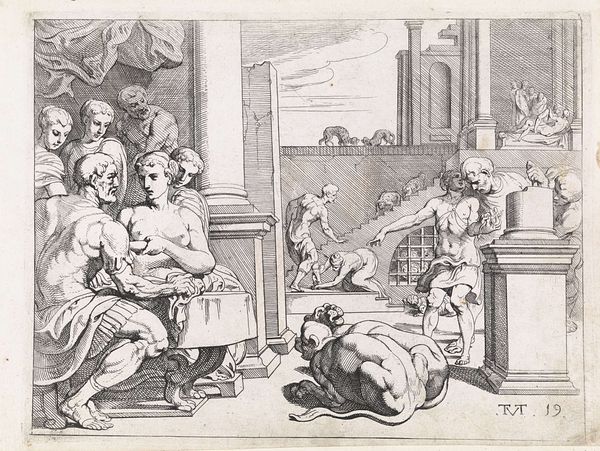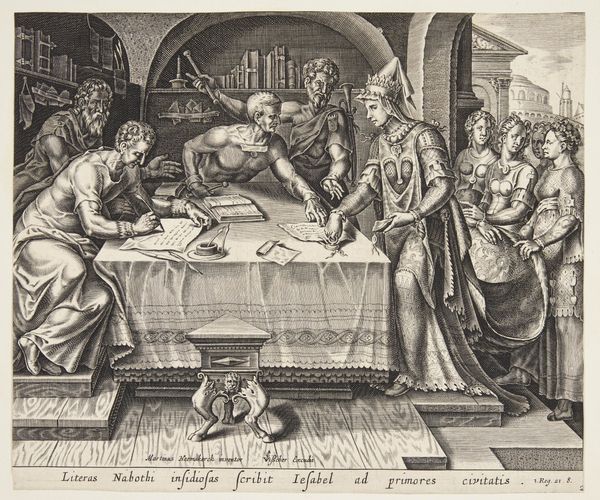
Jupiter en Mercurius in het huis van Philemon en Baucis 1586 - 1660
0:00
0:00
cornelisgallei
Rijksmuseum
print, engraving
#
narrative-art
#
baroque
# print
#
landscape
#
charcoal drawing
#
figuration
#
history-painting
#
engraving
Dimensions: height 263 mm, width 337 mm
Copyright: Rijks Museum: Open Domain
Curator: Here we have "Jupiter en Mercurius in het huis van Philemon en Baucis," a print created sometime between 1586 and 1660 by Cornelis Galle I, held here at the Rijksmuseum. Editor: Wow, it’s striking how much it looks like a stage play, all chiaroscuro and heightened drama. There’s a distinct air of "something wicked this way comes," but rendered in such delicate detail with the engraving. It feels eerie, yet domestic. Curator: Precisely. The work captures a scene from Ovid's "Metamorphoses." Jupiter and Mercury, disguised as mortals, seek shelter and hospitality. Only the elderly Philemon and Baucis offer them refuge, unaware of their guests' true identities. Editor: It's fascinating how Galle portrays these gods – there's none of the expected godly grandeur, right? They look almost vulnerable. That lean physique of Mercurius hints at a tough road; a touch of humanity and humility makes the encounter all the more intimate. Curator: The narrative served a clear social function at the time, reflecting the crucial virtues of hospitality and piety within communities. To turn away a stranger, the print suggests, is to risk offending the divine, with consequences rippling through society. Editor: And what a dynamic rendering! That poor goose trying to flee adds a wonderfully chaotic note of tension. I like to think about why it's the goose they want to sacrifice for the gods. Is it because they're common creatures, readily available, or are they supposed to hold certain symbolic meanings for the Gods, hmmm. Curator: Well, within a historical context, animal sacrifice was standard for veneration in rituals. Moreover, you have to wonder whether the scene's setting, rich in detail and seemingly insignificant domestic paraphernalia, emphasizes how exceptional Philemon's and Baucis’s hospitality really was. Editor: You’re right. It feels as if we've caught them mid-story, that transformative moment where the mundane is about to collide with the mythic, wouldn't you agree? I enjoy seeing my perspective expand like this, discovering how art and stories shape culture. Curator: And discovering new vantage points, for this episode, enriches one's own narrative, I believe.
Comments
No comments
Be the first to comment and join the conversation on the ultimate creative platform.
